September/October 2023
IN THE LONG RUN
Runner takes on major world series of races
PATH TO STARDOM
County native pursues passion for performance

September/October 2023
Runner takes on major world series of races
PATH TO STARDOM
County native pursues passion for performance
as a third-generation stonecutter
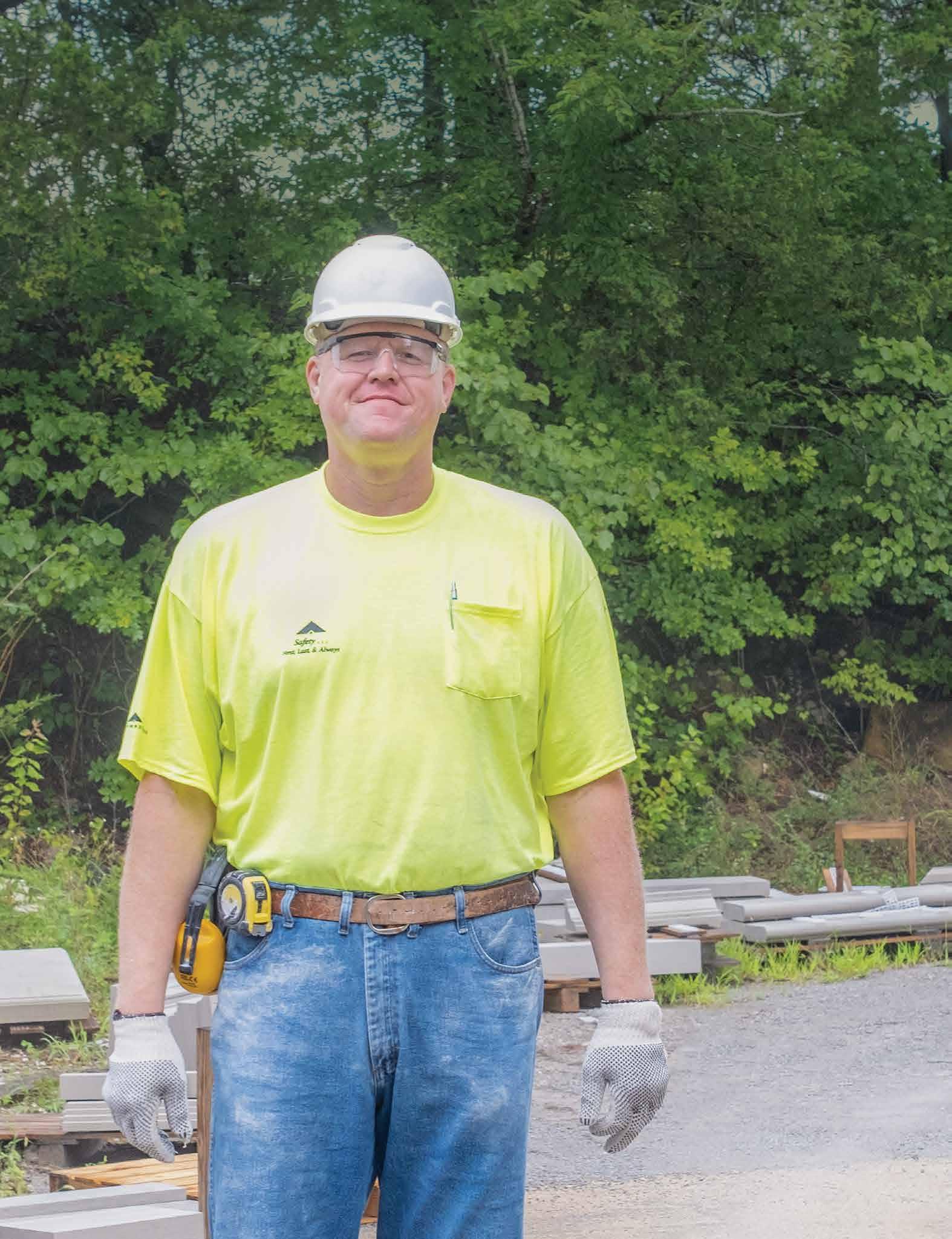
































It might be a mistake to almost always make note of the seasons and the weather in these “Letters from the Editor,” but I just can’t help myself. Don’t even the words “September” and “October” give you a delightful shiver of anticipation for cooler days to come?
Summer isn’t over yet, especially not here in Alabama, but with football’s return, I’m eager to fix a bowl of chili and a mug of hot cocoa, wrap up in a warm throw blanket, light a candle and snuggle into some cozy spot with something good to read – like maybe this edition
of Franklin Living magazine.
This one truly is full of great content you’re not going to want to miss.
In this issue you will get to know three people of passion.
Lee Todd is carving a continued family legacy as a third-generation stone cutter.


Avery Guinn is on the path to stardom with his love for all things performance art. Buddy Perdue is running after his dreams of competing in the six big marathons that make up the World Marathon Majors – including in Berlin, London and Tokyo! Like so many across Franklin County, these three ho -


metown folks have found their niche in the world, and we are honored to share their stories. Maybe they will inspire you to pursue a new passion of your own.

If all that isn’t enough to tantalize, we also have some timely recipes from Amy McCollum, financial and faith advice from Emily Mays and Philip Goad, a special word of encouragement from Superintendent Dr. Heath Grimes, reading recommendations from Lori Skinner and a bird’s eye look at the work going on at the Franklin County Extension.
Phew! That’s enough reading material to keep engaged through several brisk fall evenings. Bring on the changing colors, the pumpkin-spiced everything and the need for boots and scarves. I’m ready!

Submit community events for future issues of Franklin Living to alison. james@franklincountytimes.com. Requests must be received by the first of the month for consideration for the next edition.
Submit community events for future issues of Franklin Living to alison.james@franklincountytimes.com. Requests must be received by the first of the month for consideration for the next edition.
Sept. 9, Oct. 14
Jan. 1 through Feb. 1
Jan. 29 through March 7
The second Saturday night of each month at 7 p.m. is the monthly Kerry Gilbert Band concert at the Historic Roxy Theatre in Russellville. The KGB will be joined by a special guest for each show. Doors open at 6 p.m. Cost is $15 for adults, $5 for children 6-12 and free for children younger than 6.
Sept. 23
The Russellville Parks and Recreation Department will begin spring sports registration with soccer signups Jan. 1 through Feb. 1. Youth soccer is for boys and girls ages 3-12, and cost is $35. Teams will play their games at the soccer fields by the Chucky Mullins Center. Youth softball signup for girls ages 6-12 will begin Jan. 29 and continue through March 7, with a cost of $35. For more information call 256-332-8870, ext. 14.
Jan. 11 and Feb. 8
The second Saturday night of each month at 7 p.m. is the monthly Kerry Gilbert Band concert at the Historic Roxy Theatre in Russellville. The KGB will be joined by a special guest for

Red Bay Founders Day welcomes festival-goers to enjoy the King and Queen’s Train Ride, live music, contests, prizes, vendors, a car/ truck/motorcycle show and more. The festival will be held downtown from 8:30 a.m. to 4 p.m., with most of the action at Bay Tree Park. The Red Bay Museum will be open for tours, and downtown businesses will offer sales and specials. Admission is free. For more information call City Hall at 256-356-4473.
Oct. 7
Jan. 14-18
at Red Bay in this annual competition among county teams.
The Franklin County Chamber of Commerce hosts the family-friendly Pumpkin Palooza in Russellville. Admission is free to see the variety of scarecrows created by local businesses, churches and other groups. For more information call 256-3321760 or email info@franklincountychamber.org.

Oct. 13-14
Jan. 20-26
The Weigh-In
Live music will entertain while visitors shop the vendors, and there will be activities and fun for all ages at the Spirit of Hodges Festival, set for Oct. 13-14 in Town Park. Admission is free, and other proceeds support the Hodges Fire and Rescue Department. For more information call Town Hall at 205-9353445.

healthy and have fun doing it. Since the first challenge in 2007, Alabamians have lost more than 1 million pounds. For more information, to sign up or to find a local weigh-in site, visit www.scalebackalabama.com.
Oct. 21
Spruce Pine Day returns Oct. 21 in downtown Spruce Pine. The community festival, which began in 1999, offers neighborly fun and fellowship for all ages, including live music and vendors. Admission is free. For more information call 256383-2445.


Jan. 22 and Feb. 1
The LifeSouth bloodmobile will be in Russellville
Jan. 22 at IHP and Feb. 1 at Cricket Wireless. The bloodmobile will be at IHP from 9 a.m. to 4 p.m. and at Cricket Wireless from noon to 7 p.m. For more
Home improvements can be some of the most exciting projects. Home repairs, on the other hand, can be some of the most stressful. Home “improvements” are typically planned for and dreamed about, while home “repairs” usually means something has gone wrong.
Homeowners spend about $1,105 per year on maintenance, with emergency repairs averaging around $1,206. Some of the most significant expenses fall under the following five categories:
• Full home rewiring: $4,000 or more

• New HVAC units: $2,500 to start

• Roof replacement: $5,000 plus
• Foundation repairs: $10,000-30,000


• Plumbing: $2,000 for serious issues
With all of that information in mind, how do we financially plan for these sort of things?
While we can’t predict when disaster might strike, we can be proactive in our household budgeting to allow for home maintenance. Some key considerations include the age of your home, weather conditions and square footage.
The age of the home is important because depending on when it was built, eventually some things will need to be replaced or repaired. These items could include old wiring and
plumbing, lack of insulation or problems with heating or antiquated chimneys and fireplaces.
Weather conditions matter if your home is exposed to extreme cold, high winds and heavy rains. Although extreme cold and snow don’t typically affect us here in north Alabama, those heavy rains, wind and tornadoes are definite considerations.
Square footage matters because when budgeting for repairs, the more space you have, the more space you will likely have in need of repairs at some point.
A general rule of thumb is set aside 1 percent of the purchase price or value of your home for repairs. So, if you have $150,000 home, you should set aside around $1,500 annually – hopefully less, if your home is newer, and you should likely plan for more if you have an older home or a home that has been battered by weather.
The most important financial rule in home repair and improvements is to set aside more than you anticipate spending. If you come out spending less, great! But cushioning this part of your budget can be critical when the unexpected happens.
Emily Mays is vice president/chief administrative officer at Community Spirit Bank in Red Bay, working in finance for 15 years. She is an enthusiastic social media marketer, financial literacy advocate and go-local supporter.


In this country we have days that celebrate certain foods, and in this issue of Franklin Living we are highlighting some of our favorite foods that merit these unique observances. You might want to whip them up on their respective days!
For National Coffee Day Sept. 29 and National Chocolate Day Oct. 28, try this Brownie Mocha Trifle. This layered dessert features a fudge brownie, vanilla pudding and Heath candy, as well as cold brewed mocha coffee. If you want to pass on that coffee flavor, you can still incorporate the chocolate by using one chocolate pudding mix paired with the vanilla.
For National Angel Food Cake Day Oct. 10, Angel Berry Trifle is the perfect option. You can combine a homemade or storebought angel food cake with the other tasty ingredients in this dish for a light, sweet dessert.
National Banana Pudding Day was Aug. 31 this year, but it’s not too late to celebrate this quintessential Southern treat. Did you know there is a National Banana Pudding Festival? The National Banana Pudding Festival started in 2010 when volunteers in Centerville, Tenn., were looking for a way to help local nonprofits earn money. The festival has grown every year since then, and the mission to support nonprofits remains the same. Thousands of people come to RiverPark in Centerville, Tenn., the first Saturday and Sunday of Oc tober every year to enjoy the live music and the national cook-off. So don’t miss my quick and easy Banana Pudding Trifle re cipe in honor of this Southern fall festival.
My middle daughter, AnnaBeth Gun derman Pressnell, has become my favo rite baker. While staying home with my grandson, she has started her own little baking business, Baking with BB. I wanted to share two of her most popular items, and there are days dedicated for these delicious goodies too! National Red Velvet Cake Day is Sept. 18, and you can try her Artisan Italian Bread for World Bread Day Oct. 16; it is a customer favorite, and she always sells out on Bread Day.
National Rice Krispies Treats Day is celebrated annually Sept. 18, and our recipe provides a newer spin on the old classic by incorporating chocolate krispies alongside the original.

You can make your angel food cake or buy one from the bakery. If you don’t like Cool Whip, you can whip heavy whipping cream with a bit of powdered sugar and vanilla extract to make your own. You can change the recipe up by adding fresh raspberries or blackberries.
Ingredients
• 1 angel food cake
• 12-ounce tub of Cool Whip
• 3.4-ounce box of vanilla instant pudding mix
• 1 1/2 cups milk
• 1 pound fresh strawberries, sliced
• 1 pint of fresh blueberries
Instructions
1. Cut angel food cake into 1-inch, bitesized pieces.
2. Beat pudding mix and milk with a hand mixer until smooth in a large glass bowl. Fold in whipped topping with a rubber spatula.
3. Spoon 1/3 pudding mixture into bottom of trifle bowl.
4. Add layer of sliced strawberries and blueberries.
5. Add 1/2 of the angel food cake cubes.
6. Add 1/3 pudding mixture followed by another layer of fruit.
If you do not want to add the coffee, you can use one box of vanilla pudding and one box of chocolate. You will need to use 2 cups of cold milk instead of 1 cup.
Ingredients
• 1 package fudge brownie mix
• 1 cup cold 2% milk
• 2 packages, 3.4 ounces each, instant vanilla pudding mix
• 1/2 to 3/4 cup cold brewed coffee mocha (chilled expresso from Starbucks is my favorite)
• 2 cups whipped topping
• 1 Heath candy bar (1.4 ounces), crushed
Instructions
1. Prepare brownie batter and bake according to package directions. Cool; cut into 1-inch pieces.
2. In a large bowl, beat milk and pudding mixes for two minutes or until thickened.
3. Stir in coffee. Fold in whipped topping.
4. In a trifle bowl or 2-quart glass
If you don’t have a trifle bowl, you can layer this in 9x13 pan, and it will still work great! This recipe is best if made and enjoyed on the same day.
Ingredients
• 8 ounces cream cheese, room temperature
• 14-ounce can sweetened condensed milk
• 5-ounce box of instant vanilla pudding mix
• 3 cups cold milk
• 1 teaspoon vanilla extract
• 8 ounces frozen whipped topping (Cool Whip), thawed and divided
• 8 bananas, sliced
• 12 ounces vanilla wafers cookies
1. In a large bowl, beat cream cheese until fluffy.
2. Add in condensed milk, dry pudding mix, cold milk and vanilla and mix until completely combined and smooth.
3. Fold in half of the Cool Whip.
4. Line the bottom of a trifle bowl with
vanilla wafers.
5. Top wafers with a layer of sliced bananas.
6. Spread half of pudding mixture on top of bananas.
7. Repeat layers with remaining vanilla wafers, sliced bananas and pudding.
8. Spread remaining Cool Whip on top.
9. If desired, sprinkle crushed vanilla wafers on top.
10. Chill for two hours before serving.
Ingredients
• 2/3 cup sour cream, room temperature
• 3/4 cup buttermilk, room temperature
• 3 whole eggs, room temperature
• 1/3 cup vegetable oil
• 1 Tb. vanilla
• 1/4 cup flour
• Boxed red velvet cake mix (Pillsbury is AnnaBeth’s favorite, but you can use Betty Crocker or Duncan Hines)
• Pecans for garnishing
• For the frosting: two 8-ounces packages of cream cheese, two sticks of unsalted butter, 2 tsp. vanilla extract and 4 cups of sifted powdered sugar
Instructions
1. Use the first six ingredients with the boxed cake mix to make the cake batter. Bake in two layers, as directed on box.
2. With a stand mixer fitted with a paddle attachment, whip up the butter and cream cheese until they’re thoroughly combined and there are no little bits of cream cheese, about 1-2 minutes.

3. Add vanilla extract and stir well to combine.
4. With mixer on low, gradually add powdered sugar until completely combined.
5. Once the cake is thoroughly cooled, frost the bottom layer, then add the top layer and frost the sides and top of the cake.
6. Garnish with pecan pieces.
You can serve the bread with olive oil and herbs for dipping if you desire.

Ingredients
• 1 pack active yeast
• 3 cups all-purpose flour
• 2 tsp. salt
• 12 ounches water
• 1 Tb. Italian herbs (more or less to taste)
• 1 Tb. fresh Parmesan cheese (more or less to taste)
Instructions
1. Add yeast, flour and salt to a bowl. Mix in water with wooden spoon.
2. Cover in a warm place and let rise for two hours.
3. After two hours, roll out and fold in Italian herbs and Parmesan cheese.
4. Bake in a Dutch oven at 450 degrees for 30 minutes.

To make thicker treats, use a 9-inch square dish.
Ingredients
• 6 tablespoons salted butter (not margarine)
• 16 ounces mini marshmallows, divided
• 3 cups Cocoa Rice Krispies cereal
• 3 cups of regular Rice Krispies cereal
Instructions
1. Line a 9x13-inch baking dish with parchment paper. Set aside.
2. In a large saucepan, melt butter over medium heat.
3. Once melted, add in all but 1 cup of the marshmallows. Reduce heat to low and continue stirring until completely melted.
4. Remove from heat and stir in the chocolate and regular Rice Krispies cereal and the remaining 1 cup of marshmallows.
5. Pour into the prepared baking dish.
6. Press gently with your fingertips or wax paper.
7. Allow to set about one hour. Cut and enjoy!
Some local banks are closing offices, leaving town, or being acquired by big banks.
It’s frustrating when the bank you trusted with your financial relationship no longer exists. That’s what happened in Leighton in 1947, and Bank Independent was born to fill the void.
Over the past 75 years, we have been “Built to Serve, Not to Sell!” And, we are here to stay! Let us welcome you home and show you the award-winning Bank Independent difference.
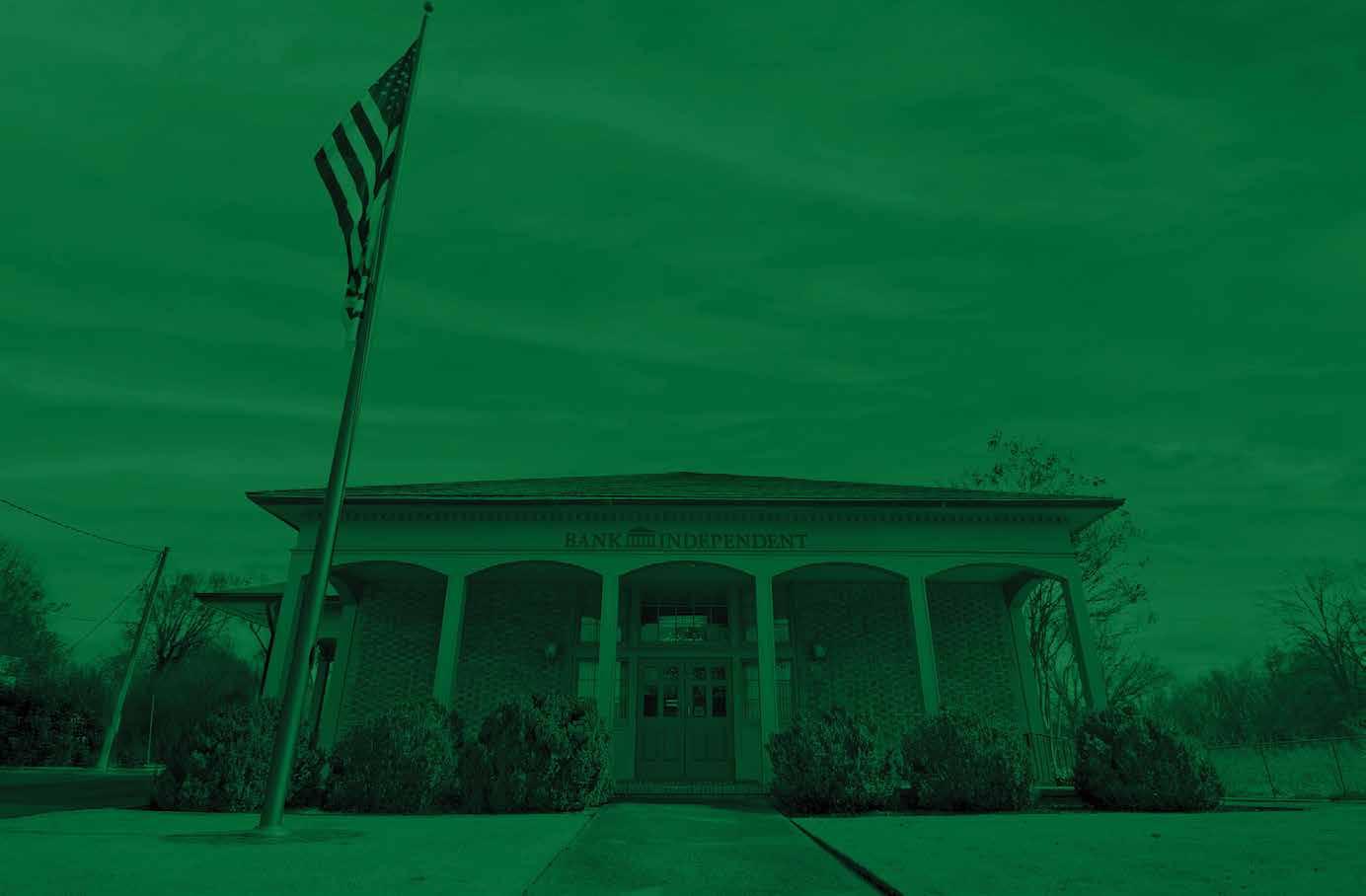
Difficult people. At least a few can be found in most businesses, church families and blood families. How can these people be helped? Are there Bible verses you can share with them? Absolutely!
Proverbs is loaded with wisdom in this regard, and most of us remember Jesus stating that the second great commandment is to “love your neighbor as yourself” (Matthew 22:39). Will the difficult person always be eager for you to quote Scripture? Hopefully so, but in the meantime, please consider the following idea: One of the best ways to help the person you perceive to be difficult is to become serious about elevating your own people skills!
Dale Carnegie referred to the arena of people skills as human engineering. Following Jesus requires us to help people – and to effectively help them, we must get along with them and do all that we can to better understand them and relate to them. If your people skills happen to be lacking, it is not entirely your fault, but it is your responsibility to get better!
Why would I say it’s not entirely your fault? My experience, both as a student and as a university administrator, has been that formal education offers little and certainly doesn’t require much related to human engineering – and that’s unfortunate. It might surprise you to learn that research conducted by the Carnegie Foundation for the Advancement of Teaching concluded that “even in such technical lines as engineering, about 15 percent of one’s financial success is due to one’s technical knowledge and about 85 percent is due to skill in human engineering – to personality and the ability to lead people.”
Yes, I know what you might be thinking. Life is obviously about more than money, but to dismiss Carnegie because he mentions money is to miss an important point.
While it would be nice for formal education to include this training, the key is to take responsibility for your own improvement. You need a personal growth plan, and the good news is that great options are available!
Leaders should be readers, and I hope you read broadly because almost all of us are leading someone. Obviously, reading your Bible is the most important thing you can do. In addition, here are a few resources that will bless you in your study of human engineering:
• “How To Win Friends and Influence People” by Dale Carnegie. This book has been around for close to 100 years, and it will still bless your life. It provides a solid foundation for personal growth by making the case that elevating your people skills matters.
• “Captivate: The Science of Succeeding with People” by Vanessa Van Edwards. From making the right kind of first impression, to being likable, to being a better encourager and leader, crucial lessons can be learned from this book, and you’ll find yourself reading through it multiple times.
Chuck DeGroat. A variety of books have been written on the Enneagram, and here’s why you need to read one of them. Sometimes the person you perceive to be difficult isn’t actually difficult at all. You are experiencing tension with that person because she doesn’t process life the same way you do. Along with better understanding yourself, acquiring a better understanding of the various ways people are “wired” can eliminate a world of perceived difficulty!
• “Sticking Points: How to Get 5 Generations Working Together in the 12 Places They Come Apart” by Haydn Shaw and Stephen M. R. Covey. How many of the difficult people you’ve had to deal with are of a different generation than yours? When you begin to understand what people of various generations value, you are far less likely to see them as difficult.
Whether you prefer reading, podcast listening or watching instructional YouTube videos, the key is to avail yourself of resources that will help you understand people, interact well with them and better relate to them, all while being a more likable person yourself.
Jere’s one more important thing. As you become a serious student of human engineering, an unexpected and surprising truth might surface. It might become clear that in many cases YOU are the difficult person in the relationship!
Think about it. We all know the person who constantly job hops or church hops. It seems he is always in search of the perfect company or the perfect church family and is disillusioned when he consistently find neither. As painful as it might be, a trip to the mirror of self-examination is probably what this always-on-the-move person needs most. He desperately needs a personal growth plan.
Learn from someone you know who has a long track record of stability both in a career and as part of a church. Ask if you can buy him or her lunch, then grab a pen and paper and begin asking questions. It is my belief that long-term success in a single organization is usually more about the people skills of the person who sticks around than it is about having found the perfect organization to be a part of.
Finally, be sure to have some people in your life who have your permission to keep your mirror clean. We all have blind spots, and we all need people who will help us see them with no agenda other than wanting what’s best for us. If you haven’t given anyone in your circle permission to mess around in your business, you really should do so sooner rather than later.
Are there always going to be some difficult people to deal with? Absolutely! The good news is that as you develop and strengthen your people skills, all your relationships with people will improve.
• “The Enneagram for Spiritual Formation: How Knowing Ourselves Can Make Us More Like Jesus” by AJ Sherrill and Philip Goad has been serving as the minister at North Highlands Church of Christ in Russellville since March 2020.

 Story and photos by MARÍA CAMP
Story and photos by MARÍA CAMP
generation stonecutter takes pride in continuing legacy
For Russellville native Lee Todd, being a third-generation stonecutter means not only getting to do work he loves but also following in the footsteps of his father, Thomas Todd, and his grandfather, Odell Todd. As an employee in the finishing department of Alabama Stone in Russellville for the past 23 years, he is carrying on a family tradition he said he is proud to continue.

“They started quarrying stone from here in the late 1800s, using a different building, and I think our current building was built in the late ’20s or early ’30s,” Todd explained. “Right before World War II, they took all the stone machinery out and began making artillery shells for the war effort.”
Todd said his grandfather worked there making artillery shells. “He wasn’t old enough to be drafted,” Todd added. “When he got old enough, he joined the Navy. He turned 18 around 1942 or 1943, and he was on a destroyer until the war was over. When he came back home, they offered him his

job back, and they were starting to make stone again by then. He retired in 1993 at 75 years old.”
Todd said it’s work all three have greatly enjoyed. “We have finished stone all over, including in other countries, and it’s very special to be able to drive by buildings and know you worked on it. We have a lot of interesting pieces all over the place. My grandfather worked on the big stone columns on the front of Valley State Bank in Russellville, and my father planed all the steps and windowsills and elements like that – all elements that are still there.”

Todd said the company’s stone is known for its quality. “Everybody wants our stone. Some of the other countries we’ve sent it to include China, Japan and Cana-
da,” he added. “We’ve even done some elements for the White House.”
Plant superintendent Heath McKee, said the company quarried about 1,272 blocks of limestone last year, representing about 32 million pounds of stone. “There are about 46 employees on site,” McKee said. “There are about seven in the quarry,


down from around 100 initially, due to new technology. They used to use drills and blast, and now we have remote control saws, which have eliminated the need for that labor in the quarry.”
While Todd never worked with his grandfather, he worked with his father until about four years ago, when the latter

We have finished stone all over, including in other countries, and it’s very special to be able to drive by buildings and know you worked on it. We have a lot of interesting pieces all over the place.









passed away. To this day, Todd uses some of his grandfather’s tools, including chisels, pitching tools and a hammer, in doing his work. At Todd’s station at Alabama Stone, recent projects include column caps and steps for a mansion.

One aspect of his job he said he especially enjoys is cutting letters by hand. “When you learn how to do it, it’s easy,” he explained, “but it takes a bit to get it in your mind, and you have to figure out how it has to be, but I enjoy that. I like the hand pitching work.”
He learned all he knows about the craft by being taught on the job. Initially, he ran a machine for a couple of months and requested a transfer when an opening became available. “It’s the kind of work some people pick up and some don’t,” Todd said. “One of the men I work with, his dad worked here for 40-something years, and the one that works next to my station, that’s his son,” he added – he’s not the only one to carry on the tradition of being a stonecutter from one family generation to the next. Todd said another employee’s father was also a cutter for 40 years.
Todd said the company has worked on a lot of buildings at the University of Alabama in Tuscaloosa – and that includes his father, grandfather and himself. “My grandfather and my dad worked on some of the stone for the Paul Bear Bryant Museum on the campus,” he said, noting that was “way before» his time. “It’s quite the operation moving stone from one place to another. In the tunnel, what we call the quarry, they have front-end loaders with big forks on them with tires around 7 feet tall. Eighteen-wheelers are used to transport the finished stone from where we are to our customers.”
While the company works on pieces for large structures, they also work on smaller elements.
“Some of what we sent to Japan, there were probably close to a thousand really small pieces in it, but with other orders, we might put eight or 10 pieces or less on a truck, and it’s fully loaded,” Todd explained. “Another thing we do is cornice, decorative trim to go outside buildings.”
Todd said some pieces take as little as 30 minutes to finish, and others can take
a week or longer. “Some of the buildings at Alabama, they’ll decide to remodel or add on because of storm damage or some other reason,” he added. “Some of the buildings are close to a hundred years old, and we’re redoing some stone that was originally done here, so I could be redoing some of the work that my grandfather did, and that’s kind of neat to think about.
“This is the only place in the world with consistent veining all the way through in the stone. Veining is kind of like the grain in wood,” Todd explained, noting that’s an element present because of how it naturally formed rather than anything they did to it.
“It’s a job you have to want to do,” Todd added. “I was always pretty good at art in school, and I’ve always enjoyed the more intricate work. I’m always proud of how the stone looks once it’s done, and there’s not too many people that still do this work in this way. It means a lot to be able to go see a building and know I had a hand in it.”
Todd is married to Anna Perez Todd. Both are Russellville High School graduates, and she is an English teacher at RHS. They live in Littleville with their children, Aria, 9, and Knox, 1.
With football season now on in full force, fans who are also literary-minded might enjoy a seasonal read that includes the gridiron sport in its storyline. Northwest-Shoals Community College library director Lori Skinner has these titles to recommend:
If you have ever wondered what Vince Lombardi has in common with Isaac Newton, we have the book for you. “Newton’s Football: The Science Behind America’s Game” by Allen St. John and Ainissa Ramirez is a clever and accessible look at the science of football. Filled with funny and insightful stories told by some of the world’s sharpest minds, this will be great for fans of “Moneyball: The Art of Winning an Unfair Game” by Michael Lewis.

 By Buzz Bissinger
By Buzz Bissinger
No list of great football reads would be complete without Buzz Bissinger’s “Friday Night Lights: A Town, a Team and a Dream.” This modern classic charts the 1988 Permian High School football season as the team makes an attempt to win a state football championship. Also by Bissinger, “The Mosquito Bowl: A Game of Life and Death in World War II,” is a true story recounting the football game that occurred between the 4th and 29th Marine regiments in the middle of the Pacific Ocean and the aftermath of war. Of the 65 players, many were former All-Americans, captains from Wisconsin, Brown, Notre Dame and nearly 20 men who were either drafted or would play in the NFL.

Marjorie Herrera Lewis’ “When the Men Were Gone” is a historical novel based on the true story of Tylene Wilson, a female football coach in 1940s Texas. When World War II calls the men of Brownwood, Texas, Tylene faces intense opposition to become a football coach in the hopes of keeping her students from choosing to join the Army and go to war. Considered one of the best books of 2019, this one is full of courage and perseverance.

New York Times best-selling author and former NFL player Tim Green kicks off his series for younger football fans with “Football Genius,” in which 12-year-old Troy White has an amazing gift: He can predict football plays before they happen. When his mom gets a job working for the Atlanta Falcons, he and his friends devise a plan to get the attention of the star linebacker to show the Falcons how useful his skill would be for the team. Definitely grab this one for your young football fans to devour between practices and games.

If football isn’t really your thing, but a great romance novel is, be sure to check out the international bestseller “It Had to Be You,” by Susan Elizabeth Phillips. When gorgeous Phoebe Somerville inherits the Chicago Stars football team from her estranged father, sparks fly. While full of humor and flirty scenes, this one has in-depth storylines that examine deeper issues of trust.
Lori Skinner is the head librarian for Northwest Shoals Community College. She can be contacted at 256-331-6288 or lori.skinner@nwscc.edu. NW-SCC Libraries are open to the public and look forward to serving your library needs. The library now has an app, Librista, available on android and Apple devices.


Russellville man competes in marathons around the globe
Many might know Russellville resident Robert “Buddy” Perdue as the co-operator of Thompson’s Drapery, a longtime staple in downtown Russellville, which he runs with his wife, Kim and her mother, Allie Thompson, who started the business in 1965 with Yvonne Porter. When he’s not busy running the business, however, Perdue is busy running in a more literal sense.
Perdue spends a lot of his time on his passion for running, having competed in numerous races. These days, he’s working toward a special goal.


While he hasn’t always been a runner, Perdue, a graduate of Muscle Shoals High School, said he has always enjoyed being active. As a child he first fell in love with soccer at age 5, when his family was living in California. He later went on to play golf, football and baseball. He began riding a bicycle at 18, mostly for fun, but competed for “a couple of years” in races. He discovered his love for running at around 41 or 42 years old.
Safety was one of the key reasons Perdue transitioned from biking to running. He said not every competitive biker handles a bike well, and “it can be kind of dangerous” to be in big groups of people racing – a position he became less willing to put himself in over time. With running, on the other hand, the courses are closed, so there’s no traffic, which makes it typically a safer competitive sport. He ran his first 5K in 2012 but notes he has “always liked long-distance events.” Originally, his plan was to run in just one marathon – in Pensacola, Fla., in 2013 – but his enjoyment, motivation and dreams have continued to grow over time. He eventually set his latest goal, which has sent him running across the world to achieve it.
“I’ve been working to complete all six of the Abbott World Marathon Majors,” Perdue explained. “I’ve done four, and I’m registered for the last two, scheduled to take place next year: Tokyo in March and London in April.” The official Olympics website, olympics. com, describes it as the “most prestigious distance running series in the world.” Perdue has already run the world marathon majors in Boston, April 2015; New York, November 2016, Chicago, October 2017 and Berlin, September 2022. He said “a little more than 11,000 people” have finished all six races. After running his first three, he kept up running but didn’t do as many marathons. Once he ran the Berlin marathon, he said he decided he was getting pretty close and «might as well go ahead and finish” all six races.
Perdue said it’s harder to qualify for the Boston marathon, which requires qualifying strictly on time, than it is for any of the other ones, but once he did, his time automatically qualified him for New York, Chicago and Berlin.

He competes in smaller races in between, “anything from mile races to 5K, 10K or a half marathon,” all “dependent on what I’m training for.” Perdue said the shorter races help him build speed. While he enjoys competing, as well as getting to travel with his wife and see different parts of the country and the world, he said running is an activity he largely likes to do by himself, really competing against himself to see how far he can push himself. “Seeing how far and how hard I can push myself is what drives me in competing.”
Perdue said he’s had a couple of running coaches, including his current one, based out of Flagstaff, Ariz., for almost six
years. He explained after communicating his goals to his coach, they work together on fleshing out a training plan. He said his favorite race so far was the New York City Marathon. “The crowds in New York were really amazing,” he explained. “We ran through all the boroughs, and each one has a different flair to it, so you can tell when you enter a new one because the music changes or the crowds change or something else is different.”
“The whole way in New York, the crows were quite amazing and really big,” he added. “It helps when you have millions of people cheering you along the entire way. All these big marathons have a ton of supportive people lined up almost the whole way.”
He said he likes being part of something not many people in the world have done or will ever do, having run a marathon. “I think it’s less than 2 percent of the people in the world,” he added.

Even when he isn’t racing, Perdue said he enjoys running as a pleasant solo activity. He said the reflective time spent alone
is a big draw for him. “Most of the time, it’s just me, out running by myself first thing in the morning enjoying the peace and quiet,” Perdue explained. “I actually just like to run. I like to get out and get away. I just like the feeling of running around the city and seeing things most people don’t get to see.
“A lot of interesting things happen early in the morning,” he noted, adding he sees “a lot of sunrises” and is “typically in a better mood after running.”
He also enjoys running with others, friends he has made in the Muscle Shoals area. His runner friends sometimes compete in the same races he does – notably Boston in 2015, when there were “probably six or seven of us that ran the Boston Marathon that year.”
“Runners have a big, encouraging community,” he added. “We always try to support each other. It’s a very supportive community. ”
For him, the love of running is the key. “Even if you never race, it doesn’t matter,” he said. “You’re still a runner, whether you race or not.”

Iam so excited to have had a great start to the 20232024 school year for Russellville City Schools. This year’s theme, which we introduced at our annual Institute at the beginning of August, is #IMPACT. With this being my last year with RCS, this theme means a lot to me personally because it encompasses everything I believe, both professionally and personally, and that I have tried to convey these past eight years here at RCS. It’s the impact we make that matters most and that will become your legacy even after you’re gone.
I’ve spoken on several occasions to our faculty and staff about the mindset of “both/and” instead of “either/or.” While quality academic instruction is and should be a priority, it can’t be our only goal. We want to make a point to have both academics and values be our focus so that we can make the most impact on our students and everyone else around us.




Teaching values is crucial, every bit as important as the academic component. Our teachers and admins are told time and time again how important academics, testing, scores and data are – and these things indeed are important! – but our focus on academics shouldn’t be so all-consuming that we forget our goal is to give our students a well-rounded education that not only prepares them academically but prepares them to be good citizens and good people who can go on to make an impact in the world.
I think somehow we have forgotten what Dr. Martin Luther King Jr. said to us: “Intelligence plus character – that is the goal of true education.” See, it’s “both/and” – not academics alone, nor character alone. It’s both.
RCS employees will strive to make an impact on the character, action and culture of our community. As a collective body of educators focused on truly teaching as opposed to being so focused on standards and assessments, we can shape the direction of our state and possibly even our country. Educators truly are in the most impactful and greatest profession in the world because they are in a position to impact the next generation –and it is my sincere hope this impact will be positive.

I invite our community to join us at RCS in looking for ways to make a positive impact on those around us and in our community as a whole this school year. I can only image the good that will come from it and the benefits we will see.


RHS graduate finds his passion in performing
really didn’t know where I was going to fit in or what my place in the world might be,” explained Avery Guinn, recalling his mindset prior to discovering a passion for performing while a freshman at Russellville High School. From that first foray into performance art, through his graduation in 2021, to today, Guinn has continued along a path to stardom, dipping his feet into a variety of performance styles.
Russellville City Schools theatre director Patrice Smith was the one to encourage Guinn’s participating in the school system’s drama programs. She said she saw something special in Guinn right away. “I could tell there was more to him than just book smarts – that he had creative intelligence,” Smith said. “I saw a little bit of myself in him. I had people encourage me along the way, and I love to be able to do that for my students. So, he got in there, and he was a natural … He’s not only a great actor, but he’s also an awesome singer. He’s a musi-
cian, a writer and an artist. It’s wonderful to have been able to see him grow and continue to grow over the years.”
Guinn said while a lot of people are stymied by stage fright when it comes to public performance, that’s not so for him. His first time taking the stage, “all sense of anxiety and uncertainty melted away for me. After doing that a few times, going on stage and being able to take an audience out of reality when they walked through those doors, I realized that performing is my reason for getting out of bed in the morning. I felt like it gave me a purpose, one that I thoroughly enjoyed.” He said performing is an especially fulfilling creative outlet. “I go on stage, and I don’t have to deal with being Avery 24/7,” he quipped. “I can just
embrace my character, or when I’m playing a concert or whatever I’m doing, I can embrace the music. I just really love the idea of people coming to watch performers. Whether they know it or not, it’s a form of escape, even if just for a little while, for the performers as well as the audience. We go and watch performers because it takes us out of reality, and we get to actually enjoy ourselves.”
His first few shows with RCS included “Shrek the Musical,” “Frozen” and “Guys and Dolls.” After graduating from high school, however, he said he has worried about how he would support himself to continue down the path of performing.
“I worked on some backups, just in case, including welding jobs, working behind a desk and working in a warehouse,” he ex-

“We go and watch performers because it takes us out of reality, and we get to actually enjoy ourselves.”
plained. “Doing the exact same thing every day with no creative outlet felt very dismal to me, and so I decided to start doing performances around the Shoals area, the first of which wound up being playing Beast in ‘Beauty and the Beast.’” Guinn said his 6-foot-2 height, long hair and bass voice have led to him “being a villain most of the time,” but that’s something he really enjoys. “Playing a villain or a comedic relief character, you have set rules inside the character for how they might act and what they might say, but with characters like that, you’re really able to let loose and make it your own, and I really enjoy that. I find myself enjoying even serious character roles.”
He has since performed in several plays in the Shoals area, including “Tuck Everlasting,” for which he received a Stanley Award, “The Drowsy Chaperone,” “Side By Side” and “Into the Woods.”
“It was such a pleasure to have Avery perform one of our featured roles in this year’s SummerStock production of ‘Into the Woods,’” praised Christie Britten, executive director of the Tennessee Valley Art Association. “He is absolutely a born performer. He is dedicated to the work and approaches it with sincere openness at each phase of the process.”

Macy Ladner has worked with Guinn as a director, as well as alongside him as a per-
former, in productions in the Shoals area. “Avery is the most positive, fun and joy of a person to be around,” she explained. “He’s so hardworking, and he was so easy to direct. Always on time, prepared and so much fun as a performer. He’s up for anything, and I’m so proud of him and excited for his future.”
During Guinn’s time at Northwest Shoals Community College after high school, he stretched his skills. “I gave Avery private voice lessons, including helping him learn to achieve the sound he wants without damaging his voice, and he was one of my choir students,” explained Jonathon Howard Romero, NWSCC choir director. “He’s incredibly hardworking, humble, and he goes out of his way to help others. He did the choral part and show choir, and I’d find him in the choir room sometimes, playing on the piano and singing, either some of his original works or some of his own arrangements of well-known pieces.”
Guinn has also embraced some performance opportunities at Arx Mortis in Killen, playing a creepy character with an accordion. He also writes music and plays piano and acoustic guitar, and he sings. He’s been a guest singer for the Kerry Gilbert Band three times, as well as performing with the KGB elsewhere. “Kerry is one of the first people that ever put me on stage, and he is definitely one of the best people I’ve ever met,” Guinn explained. “He’s a genuine person, and he is just a wonderful, supportive human being, as well as extremely talented. He is crazy talented. He’s not a person that just blows smoke. He’ll tell you stuff straight, and it’s hard to even put into words how great of a guy he is. If I grow to be half the man he is, I’ll be happy.”
People might have most recently seen Guinn performing on stage at the Watermelon Festival with the Velcro Pygmies –not his first time to perform with them. “I sang with them when I was in high school,” Guinn explained. “They came as part of a Reach and Teach program, and they asked some teachers to pick one or two students to come up on stage and sing with them.”
Smith said the band has inspired “tons of kids,” not just to do music but “to be awesome in their own way.” “I think when Avery saw them up close and personal in high school, with the outrageous hair and outfits and all the lights and sounds and everything, a lightbulb went off, and he realized he could absolutely do this – be a performer on stage,” Smith said. “They gave
him the opportunity to perform in front of his school, and he was the hero of the day. People that didn’t know his name saw his talent, his spirit and his energy.”
It was an experience Guinn said has made a huge difference in the trajectory of his life, improving his confidence and reinforcing what he had already learned: that his passion is in performing.

“These moments are oftentimes very profound for the student, as was the case for Avery,” noted the band’s lead singer, Cameron Flener. “It gives them the opportunity to see what it feels like to perform on stage, and anyone with the courage to actually climb on stage and perform in front of their peers demonstrates a willingness to do what it takes.
“He’s pursuing that passion,” Flener continued, “and based on his perseverance, I am confident he will realize his dream. Our program is giving students like Avery all across the country an opportunity to explore those outlets and set a course to fulfill their dreams.”

Guinn had stayed in touch with the band after that high school performance. When he contacted them to find out how


to get a ticket to a show they were doing in Florence the night before their Watermelon Festival show, they invited him to sing with them again, in Florence and in Russellville the next day. Performing with them for the festival in Russellville brought him some degree of hesitation, as it meant presenting a side of himself a lot of his hometown people hadn’t met yet – but, as he described previously, any anxiety he felt melted away as soon as he started performing.




“The Velcro Pygmies are some of the nicest people I have ever met,” Guinn said. “They’re very supportive of people that want to go down the path of performing. They genuinely believe in you, and if they say they believe you have a future in performing, they really mean it. Not only are they great performers, they’re also wonderful human beings, and they have really boosted my confidence.”


Guinn said their encouragement helped him find the confidence to try out for bigger things. Aug. 23 he found out he’s been selected to compete on this season of “American Idol.” The news comes after he made it through all three rounds of executive auditions, cautiously optimistic about what that could mean. He performed his own arrangement of “Wayfaring Stranger” and Elvis Presley’s “If I can Dream.” “They told me my song choice and singing style were not something they get every day,” he said.
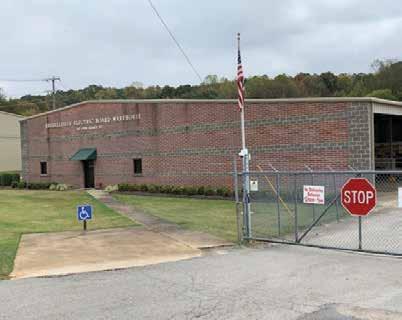
“He’s a natural, and the reason is that this is where he’s supposed to be,” Smith praised. “When you find where you’re supposed to be, it just really fits, and he happened to be one of those people lucky enough and gutsy enough to find it really early. Performing is where he can truly be himself. When you find that place, it’s the most comfortable, magical feeling. You can read on his face that he’s a natural at this. He’s not questioning or doubting, he’s performing. He’s so talented at many different things, and it’s just really


neat to see all sides of him as a performer. He’s a phenomenal singer, including as a choral singer.”
“He’s extremely passionate,” Romero agreed. “He lives and breathes music and performing. When he is on stage, he’s able to just shine, and that’s where he’s really in his element.”

Currently Guinn is living in St. Florian with friends from Arx Mortis.
“I’m trying to stay open to any and all of performing because I don’t really want to put myself in a box and close myself off from other opportunities, so if it’s possible for me to do it all, that’s what I’m going to reach for,” he said. “Whatever path this takes me down, I just want to perform. That’s what I really love.”
“Performing has brought meaning to my life, and if I’m able to do that for the rest of my life, I’ll be happy, rich man or not.”

What is the Alabama Cooperative Extension System? The ACES provides university-based knowledge, delivered straight to the people where they live and work. The system is an organization of educators who take cutting-edge research from our land-grant universities, Alabama A&M and Auburn, and turn it into practical uses that improve the lives of all people across the state.
Luther Noble Duncan was born Oct. 14, 1875, near Russellville in Franklin County. He enrolled at Alabama Polytechnic Institute in Auburn. During his studies, he became a student leader and taught at a rural school near his home during summer months for $25 a month.
1862 – Congress creates the land-grant university system to make higher education more accessible to the average citizen through research in agriculture and the mechanical arts. Alabama’s first land grant college is established, which later becomes Auburn University.
1881 – Booker T. Washington moves to Tuskegee and sets the stage for off-campus education. The information he gathers will soon become the core of the “school on wheels” offered through Tuskegee University.
1882 – Congress creates Agricultural Experiment Stations at land-grant colleges to conduct research to improve farming methods.
1890 – Congress grants land to institutions educating black citizens.
1906 – The first four county demonstration agents begin working in Alabama, taking information to farmers to make their operations more efficient and profitable.
1914 – The Smith-Lever Act enables states to establish statewide Cooperative Extension programs through their land-grant colleges to coordinate the education being delivered to the people.
1915 – Cooperative Extension begins assisting minority farmers in nine Alabama counties, growing to serve 28 counties by 1920.
1971 – A new Extension program is established at Alabama A&M University in Huntsville to serve 12 north Alabama counties.
In 1900, Duncan graduated with honors. He worked as State 4-H Club Supervisor until 1920. Working with API, Duncan visited almost every county in Alabama. By working with farmer institutes, he strengthened his knowledge of educational outreach, which came to be known as Cooperative Extension. He then became director of the Alabama Cooperative Extension System. He became president of Auburn University in 1935 and held that position until his death in 1947.
1995 – The Alabama Cooperative Extension System is created. Alabama becomes the first state to combine the Extension programs from its “1862” and “1890” land-grant universities, Auburn and Alabama A&M, into a unified statewide system, with Tuskegee University as partner.
Duncan, remembered as a director who demanded perfection from employees, once said, “A man entering upon his duties of the day without a shave or with a dirty collar … will never get very far with what he represents.” Alabama Cooperative Extension headquarters at Auburn University was named Duncan Hall after Luther Noble Duncan and his achievements.
The Alabama Cooperative Extension System offers specialists and programming in the following areas:
• Agriculture
• Forestry, Wildlife and Natural Resources
• Urban Affairs and new nontraditional programs
• Family and Consumer Sciences
• Economic and Community Development
• 4-H and Youth Development Agents are located in all 67 Alabama county offices and offer educational programs adapted to needs and interests of local residents.
For more information, contact the local Extension Office today or view online services at www. aces.edu. To contact the Franklin County Extension Office, send mail to P.O. Box 820, Russellville, Alabama 35653, or call 256-332-8880. The office is located in the basement of the Franklin County Courthouse in downtown Russellville.
Personnel serving Franklin County include:
• Katernia Cole Coffey, County Extension Coordinator






• Austin Blankenship, 4-H Foundation Regional Extension


• Agent Annette Casteel, Supplemental Nutrition Assistance Program Education Agent
• Alexandra Gotcher, Animal Sciences & Forages Agent

• Cade Grace, Agronomic Crops Agent
• Susan Hill, Food Safety and Quality Agent
• Gwen Hood, First Teacher Program
• Shirley Jimenez, Expanded Food and Nutrition Education Program Agent

• Jayne Luetzow, Home Grounds, Gardens and Home Pests Agent
• Stephanie Miller, First Teacher Program
• Darlene Minniefield, Urban Regional Extension Agent


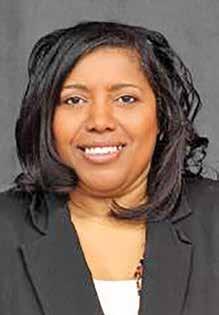



• Ida Robinson, TES Administrative Support

• Kristina Rossin, Administrative Support Associate
• Patricia Smith, Human Science Regional Extension Agent
• Elaine Softley, Human Science Regional Extension Agent
• Treca Springer, First Teacher Program
• Kerry Steedley, Forestry, Wildlife and Natural Resources Agent
• Tyler Thompson, Urban Regional Extension Agent

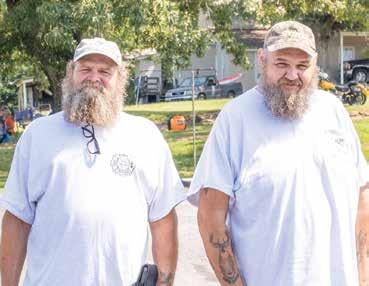
July Fest is the premier event of the summer in Vina, when friends and neighbors gather to enjoy vendors, a car show, the Draw Down contest, fireworks, fellowship and more.








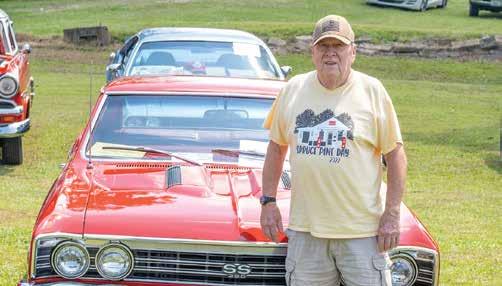



 Photos by MARÍA CAMP
Laura Everett, Jill Adams and Brenda Ayers
Cortney Smith, Renae Cochran and Maddox Cochran
Kay Todd and Deborah Threadgill
Antonio McRea, Candace Chaney and José Acosta
Kay Renfro
Chris Comeens, Frankie Ward, Booger Herring and Jim Dancoe
Tommy Davidson
Jimmy Montgomery
Essence Shirley and Cassidy Shirley
Jayla Puckett and Savannah Bates
David Scott and William Scott
Buck Allison and Larry Williams
Charles James
Photos by MARÍA CAMP
Laura Everett, Jill Adams and Brenda Ayers
Cortney Smith, Renae Cochran and Maddox Cochran
Kay Todd and Deborah Threadgill
Antonio McRea, Candace Chaney and José Acosta
Kay Renfro
Chris Comeens, Frankie Ward, Booger Herring and Jim Dancoe
Tommy Davidson
Jimmy Montgomery
Essence Shirley and Cassidy Shirley
Jayla Puckett and Savannah Bates
David Scott and William Scott
Buck Allison and Larry Williams
Charles James
















